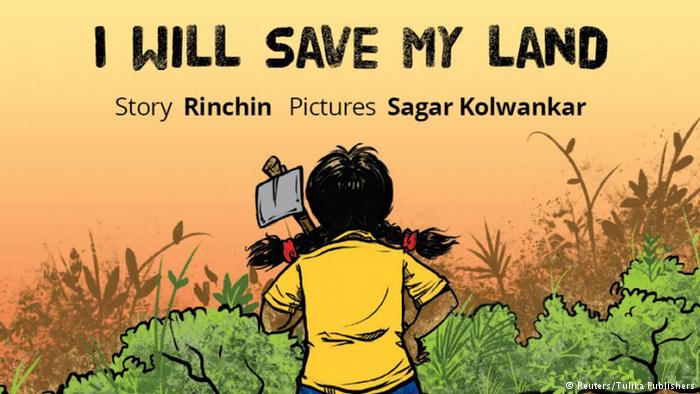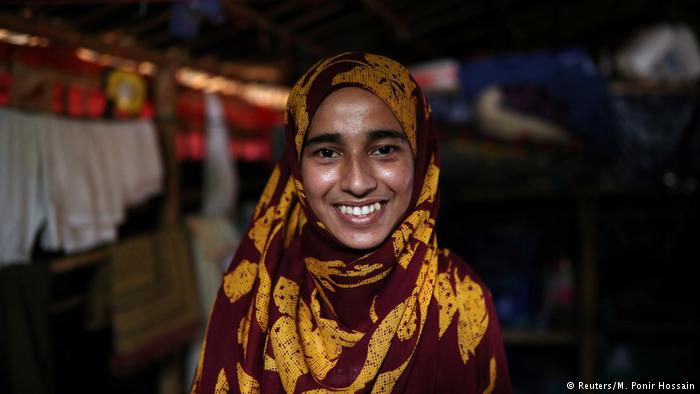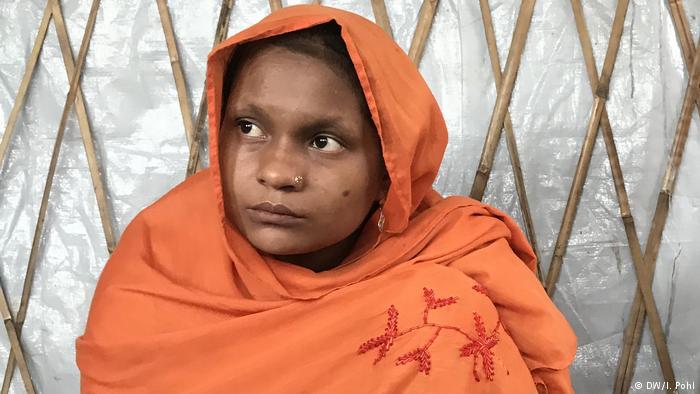The hands behind fashion
The global fashion industry has been in the spotlight following disasters in factories in Bangladesh in 2013 and beyond. Two years after the Rana Plaza collapse, garment workers in Bangladesh still face poor working conditions and anti-union tactics, a new Human Rights Watch report reveals. DW looks back on the history of working conditions for textile workers and examines current problems.
A global industry
Most of the world’s clothing passes through the fingers of textile workers in developing nations. Large international brands moved their manufacturing to Southeast Asia and Latin America long ago, where workers are paid low wages. When garments are produced cheaply in sweatshops, protecting the environment and the rights of workers is not a priority.
Mass production
The mass manufacture of clothing was pioneered in Britain during the industrial revolution, which began in the 18th century. By the early 1800s, the textile industry boomed in the areas around London and Manchester, which had more than 100 cotton mills in the 1850s. Child labor, long working weeks, poor wages and health problems were common among the workers.
History of mistreatment
 Soon, the harsh work conditions migrated. In the USA, 146 garment workers died in the Triangle Shirtwaist factory fire in New York in 1911 after managers had locked the exits. A memorial service was held on the centenary. Most of the victims were young women and their working conditions were similar to those which can be found today across Asia – long hours, meager wages and unsafe buildings.
Soon, the harsh work conditions migrated. In the USA, 146 garment workers died in the Triangle Shirtwaist factory fire in New York in 1911 after managers had locked the exits. A memorial service was held on the centenary. Most of the victims were young women and their working conditions were similar to those which can be found today across Asia – long hours, meager wages and unsafe buildings.
Made in China
 With nations competing to lower the cost of garment manufacturing, factories moved in the 1970s from the US and Europe to Asia and Latin America. China is now the world’s largest textile manufacturer. Chinese textile workers are becoming increasingly better paid, up to 370 euros ($500) a month, leading factory owners to move to neighboring countries where pay rates are lower.
With nations competing to lower the cost of garment manufacturing, factories moved in the 1970s from the US and Europe to Asia and Latin America. China is now the world’s largest textile manufacturer. Chinese textile workers are becoming increasingly better paid, up to 370 euros ($500) a month, leading factory owners to move to neighboring countries where pay rates are lower.
Exploitation wages
 In India’s southern state of Tamil Nadu, girls in the region of Sumangali work to make clothing. Sumangali means “the bride that brings wealth” in Tamil. An estimated 120,000 girls are currently involved in so-called ‘training periods’ of up to four years in textile or spinning works here, to earn money for their dowry. Pay for a 12-hour working day can be as little as 60 euro cents.
In India’s southern state of Tamil Nadu, girls in the region of Sumangali work to make clothing. Sumangali means “the bride that brings wealth” in Tamil. An estimated 120,000 girls are currently involved in so-called ‘training periods’ of up to four years in textile or spinning works here, to earn money for their dowry. Pay for a 12-hour working day can be as little as 60 euro cents.
Fighting for better pay
 In Cambodia, an estimated 300,000 women work in textile factories, generally under miserable conditions. A Cambodian worker can earn about 50 euros a month. Workers have been shot at while protesting for higher wages. In Bangladesh, about four million people work in the garment industry and the majority of them are women. The country is highly dependent on its cheap garment manufacturing sector.
In Cambodia, an estimated 300,000 women work in textile factories, generally under miserable conditions. A Cambodian worker can earn about 50 euros a month. Workers have been shot at while protesting for higher wages. In Bangladesh, about four million people work in the garment industry and the majority of them are women. The country is highly dependent on its cheap garment manufacturing sector.
Tragic consequences
 The plight of modern textile workers caught global attention when a factory collapsed near Bangladesh’s capital Dhaka on April 24, 2013. More than 1,100 people were killed. It was the largest of many recent building failures and fires in the industry. The tragedy led to about 80 companies, like H&M, KiK and Metro, signing an agreement for safer working conditions in Bangladesh’s factories.
The plight of modern textile workers caught global attention when a factory collapsed near Bangladesh’s capital Dhaka on April 24, 2013. More than 1,100 people were killed. It was the largest of many recent building failures and fires in the industry. The tragedy led to about 80 companies, like H&M, KiK and Metro, signing an agreement for safer working conditions in Bangladesh’s factories.
A world away
The bright displays in shop windows belie the reality of life for many textile workers. German-based fashion brands are among the customers of textile factories with questionable practices. Long supply chains and a lack of transparency still make it hard to work out how and where their products are manufactured though.
Author: Samantha Early
Editor: Marjory Linardy
WTO RECOMMENDS
A year after the Rana Plaza tragedy
On April 24, 2014, an eight-storied garment factory collapsed in Bangladesh, leading to the deaths of more than one thousand people. Women Talk Online blogger Aziza Ahmed visited the site of the tragedy and narrated her experience in this blog. (From: April 24, 2014)
Indian Prime Minister- Narendra Modi, is currently marketing his model of development around the country. But in the dry and arid hinterland of India’s western Gujarat state, one woman who believes in Gandhi’s ideals is working tirelessly to uplift women. (From: May 14, 2014)
10 fashion tips for spring: recurring pattern
Here are 10 tips to freshen up your look for spring. The good news: You’ll probably find most of the items in your closet. Fashion will always be fascinated with the groovy 70s, it seems. (From: April 9, 2014)










